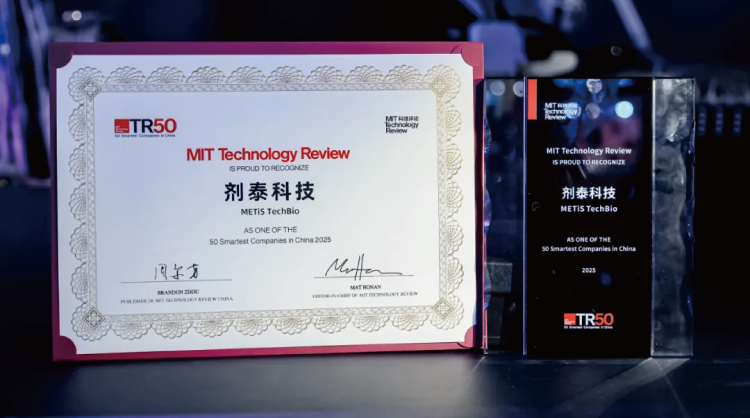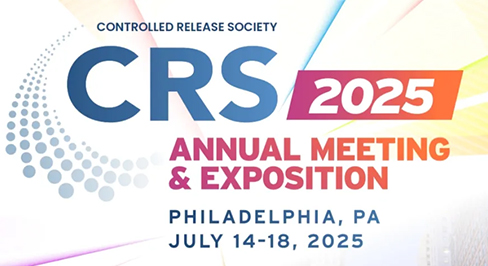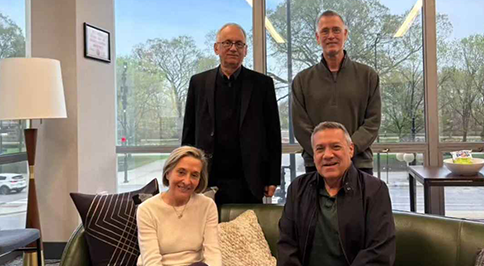Recently, Dr. Chris Lai, Co-founder and CEO of METiS Technologies, was invited to attend the 3rd IARO International Symposium held in Tokyo, Japan, and delivered a keynote academic presentation.
The IARO Summit (International Symposium of the International Anti-Aging and Regenerative Medicine Organization) focuses on the latest global development trends in anti-aging and regenerative medicine and is an important academic platform in the field of regenerative medicine in Asia. This year’s conference was chaired by Dr. Tatsuya Yamasoba, President of Teishin Hospital and Professor Emeritus at the University of Tokyo. Dr. Richard H. Kaszynski, Director and Co-founder of Stanford Solutions at Stanford University School of Medicine, Dr. Joshua Chou, stem cell and space medicine expert at the University of Technology Sydney (UTS), and many other world-class scholars attended the meeting to share their latest research findings.

According to the United Nations World Population Prospects 2023, the global population aged 65 and above accounts for 10.3% and is expected to reach 16% by 2050. Among them, Asia is the region with the most concentrated aging population worldwide, and many countries have already entered or are about to enter a “super-aged society,” where the proportion of people aged 65 and above exceeds 14%. According to a report by Grand View Research, the global regenerative medicine market size surpassed USD 300 billion in 2024 and is expected to reach USD 850 billion by 2030, with a compound annual growth rate (CAGR) of 18.7% during 2024–2030, becoming one of the fastest-growing segments in the global healthcare industry. Anti-aging and regenerative medicine represent the most cutting-edge and application-valuable research directions in the life sciences field.
At this summit, Dr. Chris Lai delivered a keynote presentation entitled “AI-Driven Nanomaterial Platforms for Organ-Targeted Regenerative and Anti-Aging Therapies”, sharing METiS Technologies’ innovative exploration and practice in the field of “AI + nanomaterials.”

In December 1959, Nobel Prize winner in Physics Richard Feynman proposed in his famous lecture, “There’s plenty of room at the bottom”, which inspired the entire development of nanotechnology.
The design and optimization of nanodelivery materials is a vast and complex project, and finding the ideal material combination is like “looking for a needle in a haystack.” Traditional methods are often limited to locally optimal solutions, while the introduction of AI breaks through the boundaries of human experience and can discover entirely new delivery materials in unexplored areas with greater efficiency and systematic approaches.
Since its founding, METiS Technologies has focused on applying AI and machine learning to nanomaterial R&D. Combined with high-throughput screening and experimental platforms, it has successfully expanded the design space of nanodelivery materials by more than a thousandfold, laying a solid foundation for precise organ and tissue delivery.
Aging is a gradual dynamic process, manifested in the early stage as molecular-level damage accumulation and later as functional decline of tissues and organs. At present, many aging-related diseases such as sarcopenia, Alzheimer’s disease, stem cell exhaustion, and organ fibrosis still lack effective therapies.
Targeted delivery technology based on lipid nanoparticles (LNPs) can precisely transport nucleic acids, proteins, and other effective molecules to specific organs and tissues, bringing new ideas for the treatment of aging-related degenerative diseases. For example, using LNPs to deliver Yamanaka factor mRNA has successfully reprogrammed dermal fibroblasts of aged mice to a youthful state in animal experiments, restoring collagen secretion function.
At present, with its self-developed AI technology platform, METiS Technologies has already achieved precise targeted delivery to key tissues such as the liver, lungs, muscle, and central nervous system, opening the door to “cellular rejuvenation” and “tissue regeneration.”
Aging is not a uniform process but rather a “personalized degeneration” state of different organs at the molecular, cellular, and tissue levels. Alveoli become stiff due to the loss of elastic fibers, muscles gradually atrophy due to satellite cell depletion, and skin develops wrinkles due to collagen degradation.
Through aging biomarker diagnostics, it is possible to customize an individual’s aging profile. Specific nucleic acid sequences can be carried by customized nanocarriers—like rockets carrying satellites—to be precisely delivered to target tissues and cells, reprogramming senescent cells into healthy cells, thus realizing “organ-specific personalized anti-aging therapies.”
Aging is no longer the “end program” of life but becomes an adjustable and reversible “intermediate state.” This “anti-aging future,” which once existed only in science fiction, is gradually becoming a reality in scientists’ laboratories with continuous breakthroughs in AI technology.





